Opinion
Post COVID19 Online Examination: Possibilities and Challenges
Published
5 years agoon
By
BK Editor
Dr Syed Zahoor Ahmad Geelani
University is a multifaceted institution of advanced learning usually meant for disseminating and creating new knowledge, deliver quality education, work for national interests, further international cooperation and produce skilled human resource. In our country we have as many as 907 Universities as of 31-12-2019, out which 399 are state Universities, 334 are Private Universities, 126 Deemed to be Universities and 48 Central Universities. Besides there are other more than 40,000 colleges and 10752 Stand Alone Institutions providing higher education in different disciplines. In its last tenure of UPAS –II the government of India has established 14 New Central Universities; the main aim behind the establishment of these institutions was to make some change in the existing higher education system of India. These universities were assigned the pace setting role in progress of academic education and skill development and at the same time were expected to bring reforms and transformations into academic sectors through creating of skilful human powers. These CFI must be attached and collaborated for promotion to institute and must be supportive for regional level development of colleges and institutes and as such have leadership role in the higher education sector of our country.
The Central University of Kashmir is working hard in realising its objective of being a pace setting institution in the country in general and in J and K in particular. We have been successful in developing a robust online pedagogical strategy wherein the students on rolls were supported by compete SLM package along with supportive zoom classes, whattapp voice messages, Google classes, and periodic guidance and counselling sessions. Along with the online e – transmission of teaching learning materials and guidance a large number of webinars and e-conferences were organised by the different departments of the varsity. When we have almost completely shifted to online pedagogy we need to explore the possibilities of Online evaluation process, although there are a number on impediments which restricts our progress towards online examination system but owing to the grim situation created by the global pandemic we are almost left with no option other than to shift to the online examination.
The School of Education, Central University of Kashmir organized a National e- Conference on “Challenges and Opportunities of Online Examination amid Covid-19” on July 3rd 2020. Two key speakers deliberated threadbare on the subject The speaker Prof. S. K. Yadav, Former Head, Department of Teacher Education, NCERT in his presentation stressed that online examination needs to be emphasized as its importance has been highlighted by number of commissions & committees from time to time. He stressed that the examinations now should be based on self-assessment and need to be more innovative. Prof Sanjev Sonawane, Dean, Faculty of Multidisciplinary Studies, Savitribai Phule Pune University described various e- Assessment tools which can be employed especially during Covid-19. He deliberated that 21st century demands using the internet and digital platform tools to plan, share and curate learning. He made the participants aware about the different online tools which can employed and also elaborated the context and procedure to use for their implementation. Here I want to share his detailed deliberations for the Teachers of our state so that we all may get benefited by the online assessment tools available for us, if at all we may someday switch over to online examination. These latest online e-assessment tools are
- Topgrade Quiz Maker
Topgrade is one of the best e-assessment tools used by more than 250,000 students use to improve their exam results. We can create quizzes, courses and flashcards in it. It can be had from https://www.topgradeapp.com/ Its main features are
- we can create an unlimited number of resources to help us learn.
- We can choose from several question types including multiplechoice, fill-in-the-blank and matching.
- We are also able to add images and time limits to our questions.
- Best of all we can create resources anywhere and anytime, online or offline, via our Android and Apple apps.
- Class Maker
It is very secure, professional web-based Quiz maker, easy-to-use, customizable online testing solution for business, training & educational assessment with Tests & Quizzes graded instantly saving you hours of paperwork, It can be downloaded from https://www.classmarker.com/. The main features of this e-assessment tool are
- Secure & private, easy to define test settings, no software installations required and can create assistants to help manage your account.
- Custom certificates & exam branding, exams can be conducted with public & private options
- Results automatically graded & viewable in realtime PCs, Macs, iPad, iPhone, Android, Chrome book & more.
- ProProfs (Quiz Maker)
This tool can be used to make delightful quizzes and tests using ProProfs Online Quiz Maker Software, can Create a quiz from scratch or pick from 100,000+ customizable quizzes that come bundled free of cost with online quiz software.
It can also help to get access to a library of 100,000+ ready-to-use questions and 10+ question types including fill in the blanks, multiple choice, hotspot and more with our quiz builder tool. This tool can create scored quizzes, personality quizzes or surveys with ease, add images, presentations, and videos to make your quiz interactive. The tool can be had from https://www.proprofs.com/quiz-school/. Its important features are
- World’s simplest way to create online quizzes, delightful reports & analytics
- Customize quizzes your way with quiz creator software
- Quiz anytime & anywhere with quiz generator with 100+ settings & Configurations.
- Online Quiz Creator
This is a very user-friendly e-assessment tool used to create online quizzes and can be downloaded from the link https://www.onlinequizcreator.com/. Its main features are
- It helps in Challenging the users on any platform. Lots of question types to choose from (Text questions, Multiple choice questions, image questions, multiple right answers)
- Advanced game statistics and rankings, rich tools and sharing.
- Moodle
Moodle is the world’s most popular learning management system. The focus of the Moodle project is always on giving educators the best tools to manage and promote learning, but there are many ways to use Moodle. It can have online from https://moodle.org/ with the following features
- Moodle is an Open Source Course Management System (CMS), also known as a Learning Management System (LMS) or a Virtual Learning Environment (VLE).
- It has become very popular among educators around the world as a tool for creating online dynamic web sites for their students.
- Quiz Pedia
Quiz Pedia is a digital tool for quizzes in the classroom. It can easily add text, pictures and sound. It can be downloaded from http://www.quizpedia.com/ with following features
- Use quizzes to assess student’s level of understanding or make the students co-creators of the own learning and allows them make quizzes themselves and then share them with their peers.
- Free, but access to statistics, feedback function and customizing requires a fee.
- Interact: Create a Quiz
Interact is a tool for creating online quizzes that generate leads, segment our audience, and drive traffic to our website. It can be had from the link https://www.tryinteract.com/ with the features such as personalized quiz, scored quiz and assessment quiz.
- Quest Base | Freely create on-line and printed
Quest Base gives us the freedom to ask, Millions of questions (and counting) published and printed with QuestBase free of charge. The online source for this tool is https://www.questbase.com/ with the features such as to create quizzes, tests, assessments, exams or get feedback from surveys and polls, within minimum possible time.
- Socrative | Student Response System
Socrative is a smart student response system that empowers teachers to engage their classrooms through a series of educational games and exercises via smartphones and tablets.
These apps are super simple and take seconds to load and run. Teachers control the questions and games on their laptop, while students respond and interact through their smartphones/laptops. Users can run it as an app or on any web browser. This e-assesment tool can be had online from the link https://www.socrative.com/ with the following featues
- Quiz and Grade at the speed of learning with activities like Quizzes, Quick Question, Class count.
- Helps to get instant feedback and can create personalized activities.
- It has option for more time for teaching; it is available on all platforms and is free for students.
- Hot Potatoes
| It is high time to explore the options of alternate channels for assessment and evaluation at all levels of schooling, we can no longer resist the concepts of Open Book Examination, Blended evaluation and on spot Evaluation and integration of pedagogy with evaluation.
|
The Hot Potatoes suite includes six applications, enabling us to create interactive multiple-choice, short-answer, jumbled-sentence, crossword, matching/ordering and gap-fill exercises for the World Wide Web. Hot Potatoes is freeware, and we may use it for any purpose or project we like. It can be integrated with Moodle. It can be retrieved online from http://hotpot.uvic.ca/.
Besides there are so many more e-assessment tools available online which can be used by the functionaries to initiate the process of online assessment of the students at different levels, no doubt the process of online examination does not fully suit to the educational scenario of our country but there is an age-old proverb that necessity is the mother of invention and in the present Global pandemic which is by every passing day becoming uglier especially in our own country now we have no option other than to turn digital.
In our own social-political scenario we are between the devil and the deep sea like situation, neither we have basic digital infrastructure in place nor we are having the normal internet speed available here and one more serious impediment is that the end-users are also neither well trained to use digital platforms nor the necessary ICT gadgets are easily available with them. Keeping in view such a grim situation we cannot afford to completely rely on online platforms but at the same we have to switch over to it sooner or later. In my opinion the best solution for the functionaries is to develop a blended approach just like we are now using blended pedagogy for the teaching-learning process and that is the only way forward and a win-win situation can be generated. I suggest that we must start an online examination supported by individualized interaction either face to face or with the help of other ICT Channels.
You may like
-




Blossom at Risk | Climate Change and Its Impact on Floriculture
-




SMHS incident: When hope turns to rage
-




RBI penalises Central Cooperative Banks Baramulla, Anantnag for violations
-




Editorial | J&K Budget 2025-26 – A Balancing Act
-




CII J&K Organizes Health Conclave 2024
-




Kya kuchh tha jiske kehne ko: A tribute to father
AgriBiz
Blossom at Risk | Climate Change and Its Impact on Floriculture
Published
4 months agoon
July 30, 2025By
BK Editor

Dr Zahoor Ahmed Rather
Prof Imtiyaz Tahir Nazki
Blossom at Risk
The global environmental agencies declared 2024 the hottest year and over the course of the last century, the average surface temperature of earth has increased, amounting to around 0.74 0C.As per the Economic Survey, India is the seventh most vulnerable country to climate change and faced severe weather extremes, with 93% of days in 2024 marked by extreme climate events such as heatwaves, cyclones, and floods. As the world grapples with the phenomenon of climate change, one of the most visually striking yet often overlooked casualties is the floriculture industry. From tulips in the Netherlands to roses in Kenya, the delicate balance required for flower cultivation is being disrupted by rising temperatures, erratic weather patterns, and shifting ecosystems. The floriculture industry employs millions of people, from small-scale farmers in developing countries to large-scale exporters in Europe and Asia. The decline in flower quality and quantity due to climate change could have far-reaching consequences not only affecting global flower supplies but also small-scale flower growers, being the backbone of this industry, and may be forced out of business. At present, 1191 growers registered with Department of Floriculture (J&K) are active in commercial floriculture business generating an income of Rs. 19.42 crores (2023-24) which is under threat due to climate change.
The Kashmir’s temperate climate, fertile soil, and glacial waters have nurtured a flourishing floriculture industry with an area of about 431.25 ha alone under gardens, parks and lawns, attracting tourists all over world. Kashmir once celebrated as the “Garden of Eden” for its riot of colors and fragrances, isnow slowly turning into a battleground where nature and climate change are stuck in a grim struggle. Extreme weather events, like unseasonal frosts, irregular precipitation patterns, prolonged droughts and increased evaporation rates are becoming more frequent. One of the immediate consequences of climate change in Kashmir is the disruption of traditional weather cycles.


The most significant impacts of climate change are the alteration of crop blooming cycles. A shorter blooming season, improper floral growth and colour development, and insufficient flowering are all problems associated with commercial flower cultivation, especially under open field conditions. Thus flower crops like tulip, marigold, gladiolus, annuals grown under open conditions will be greatly affected by these erratic weather changes. Among ornamental crops, flowering bulbs are considered as vital indicators of climate change due to their sensitivity to minor seasonal cues and temperature changes. Warmer temperatures are causing flowers to bloom earlier than usual, disrupting supply chains and affecting seasonal markets. Spring flowering bulbs viz., tulips, daffodils and crocuses are among the first plants to signal the onset of spring, have been observed blooming earlier than historical averages. Warmer winters have caused premature bud formation making them highly susceptible to unexpected frost. Ornamentals such as tulips, daffodils, magnolia, irises which need chilling temperature for flowering are adversely affected. Under present scenario of mild winter and warm spring, the bulb yield oftulip is expected to hit badly. On the other hand, summers, with prolonged unexpected heat waves have also disruptedthe normal blooming process of flowers. These conditions lead to shortening of flower duration and deterioration of aesthetic and commercial value.
Temperature extremes not only influence the timing and quantity of flowering but also affect flower quality including volatile fragrances of flowers. Temperature at low to medium range plays a critical role in pigment production especially anthocyanin which contributes to the vibrant colours of flowers. The extreme temperature has also been linked to declining number of flowering buds and smaller flower diameters in species like Antirrhinum majus and Impatiens walleriana. Any unusual change in photoperiodism and thermoperiodism due to climate change would result in a significant deviation in the flowering patterns of plants such as carnations, chrysanthemums, and poinsettias.
The plant hardiness zones have also been observed to move northward or upwards in response to rising temperatures. Diversity of some alpine species has become vulnerable and their distribution is gradually narrowed. The rhododendrons and other woody ornamentals of lower hills have begun to invade the alpine areas thus changing the composition of plant population. Changes in the timing, duration, and abundance of flowering have the potential to disrupt ecological relationships among plants, pollinators, herbivores, flower parasites and pathogens.
Rising temperatures, altered precipitation patterns and increased humidity create favourable conditions for outbreak of pests and diseases by expending habitat range that can cause damage to ornamental plants at high scale. This can pose a significant challenge to sustain quality production in floriculture, thus requiring integrated approaches to devise management strategies.
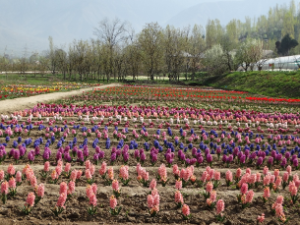

The plight of Kashmir’s floriculture is a microcosm of the global climate crisis. Despite the challenges, the floriculture industry has to adopt innovative approaches to combat climate change. Farmers can take up greenhouse cultivation to have better control of temperature and humidity and drought-resistant flower crops along with precision farming practices like drip irrigation etc. The modern approaches like roof and vertical gardening can play an important role in improving air quality, and reducing surface temperature in the built environment, costs for heating or cooling of building and noise pollution. Interior landscape plants are also useful to enhance indoor environmental quality and improve workplace efficiency. Development of public parks and lawns enriched with native flora improves air quality, mitigate health risk and maintain species diversity. The AI-powered systems can also be used to monitor and optimize the growing conditions of high value crops. Therefore, the future of Kashmir’s floriculture depends on collaborative efforts across all sectors. Policymakers, researchers, and industry leaders must join their hands to work together to execute policies and practices that promote sustainability and protection of the region’s floral heritage and tourism industry associated with it.
The authors are faculty at SKUAST-K’s Division of Floriculture and Landscape, Shalimar. zahoor.rthr@gmail.com
Opinion
Ethical Consumerism And Organic Market Nexus
Published
4 months agoon
July 26, 2025By
BK Editor

Dr Binish Qadri
Malik Daniyal Shabir
The choices consumers make today are no longer limited to price and utility. Increasingly, purchasing decisions are being shaped by deeper concerns—about the environment, labour ethics, health, and long-term sustainability. This shift in consumer consciousness has brought ethical consumerism to the forefront of economic and social discussions. Ethical consumerism, at its core, is a form of activism. It transforms everyday market behaviour into a statement of values, where individuals engage with the marketplace not just as buyers, but as participants in shaping a more equitable and sustainable world.
One area where the impact of ethical consumerism is especially visible is the organic market. Organic food is not just about pesticide-free vegetables or hormone-free milk; it represents a broader commitment to a way of life that values nature, fairness, and health. The rise of the organic market is not merely a trend, but a response to a collective moral impulse—one that sees food as a gateway to better living for individuals and communities alike.
Ethical consumerism is not an entirely new phenomenon. It can be traced back to movements like boycotts of slave-produced sugar in the 18th century and, later, fair-trade campaigns in the 20th century. As globalisation expanded markets, it also exposed consumers to the darker side of production—sweatshops, deforestation, animal cruelty, and chemical abuse. Simultaneously, the organic farming movement took root, driven by concerns over synthetic fertilisers, pesticides, and declining soil health. What began as a fringe movement soon gained traction with the rise of environmental activism and public health awareness. In India, government recognition and consumer interest have boosted organic farming policies and local organic brands. Together, these developments forged a shared moral and ecological ground between ethical consumerism and the organic movement.
Organic food is not just about pesticide-free vegetables or hormone-free milk; it represents a broader commitment to a way of life that values nature, fairness, and health. The rise of the organic market is not merely a trend, but a response to a collective moral impulse—one that sees food as a gateway to better living for individuals and communities alike.
Health has long been a personal concern, but in recent years it has also taken on moral dimensions. The link between food choices and long-term well-being is clearer than ever, and consumers are beginning to view the act of buying food as an ethical choice. Rising rates of lifestyle diseases, antibiotic resistance, and food adulteration have forced many to question conventional agricultural systems. Organic food offers an alternative that aligns with both personal and societal health goals. Choosing food grown without harmful chemicals becomes not just a self-protective act but a gesture of solidarity toward a cleaner environment and a healthier community. In this light, the push for organic food becomes not merely a dietary decision but a reflection of a broader ethical framework.
There is a complementarity between ethical consumerism and the organic market. Both affect and get affected by each other. The consumption of organic food has moral considerations, such as health and social concerns including the environment and sustainability. Agricultural economics is witnessing a rising trend and craze for organic food, which is visible in the shift in the consumer taste and demand towards organic food. The mounting health issues among general population, especially among young folks are pressing hard for development of the organic market. Consumers are the king of the market who increasingly see organic food as a way to support eco-friendly or sustainable farming practices, safeguard the environment, and avoid chemicals linked to traditional farming.
As far as ethical consumers are concerned, they are often inspired by concerns about environmental impact, human rights, human freedom, and animal welfare, which coincides with the organic farming canons. In other words, they are bothered about the holistic socio-environmental and animal welfare outcomes of their purchasing power decisions. They give importance to the goods that are in accordance with their ethics and moral values, including environmental sustainability and objective labour activities. This contains refraining from goods from firms with a bad reputation or buying from firms displaying moral conduct right from scratch. They pay a pivotal role in promoting sustainable development, meeting needs of the present generation without compromising the needs of the future generations. They provide backup to ethical trade and commerce. They give top priority to companies with a great ethical background and sustainability principles, giving a clear-cut message that moral values are above all. Moreover, they stimulate demand for sustainable goods. They prefer fair-trade goods, organic food, and sustainable goods, and accordingly, create a demand for sustainable substitutes, promoting innovations (especially green innovation) and produce sustainable and green goods. The moment they do away with those companies that promote unethical and unsustainable practices, they basically drive a long path towards sustainable development. It has a dual effect: On one hand, it restricts child labour and immoral labour practices and on the another hand, it reduces environmental degradation. Furthermore, ethical consumers can promote environmental responsibility by raising awareness about social and environmental issues. They always prefer well-informed choices, thereby empowering consumers in every possible manner. By making informed choices, they be held personally responsible for their actions impact on the social systems and environment.
In states like Sikkim, which declared itself fully organic in 2016, consumer support and political will came together to build an ecosystem that values soil health, farmer welfare, and chemical-free produce. Farmer cooperatives and weekend organic markets in cities like Bengaluru, Pune, and Delhi have become popular precisely because they appeal to a consumer base that wants its spending to reflect its values. These cases show that ethical consumption is more than a concept—it is a living force with the power to transform how food is grown and consumed.
Across the globe and within India, the convergence of ethical values and organic preferences is reshaping markets. Brands like Organic India and 24 Mantra Organic owe much of their success to ethically conscious consumers who demand transparency, sustainability, and purity. In states like Sikkim, which declared itself fully organic in 2016, consumer support and political will came together to build an ecosystem that values soil health, farmer welfare, and chemical-free produce. Farmer cooperatives and weekend organic markets in cities like Bengaluru, Pune, and Delhi have become popular precisely because they appeal to a consumer base that wants its spending to reflect its values. In states like Sikkim, which declared itself fully organic in 2016, consumer support and political will came together to build an ecosystem that values soil health, farmer welfare, and chemical-free produce. Farmer cooperatives and weekend organic markets in cities like Bengaluru, Pune, and Delhi have become popular precisely because they appeal to a consumer base that wants its spending to reflect its values. These cases show that ethical consumption is more than a concept—it is a living force with the power to transform how food is grown and consumed.
While the growth of ethical consumerism and the organic market is promising, it is not without obstacles. One major challenge is greenwashing—where companies falsely advertise their products as ethical or organic, misleading well-meaning consumers. There is also a cost barrier: organic and ethically produced goods are often more expensive, making them inaccessible to a large section of the population. Certification standards vary, and not all organic products undergo rigorous verification, creating confusion and mistrust. Moreover, the effectiveness of ethical consumerism hinges on access to information. In many regions, consumers lack the knowledge or tools to make informed choices, limiting the reach of these movements. These challenges must be addressed to sustain momentum and ensure that ethical consumerism remains a genuine force for good.
The relationship between ethical consumerism and the organic market is not incidental—it is deeply rooted in shared values and mutual influence. Ethical consumers drive demand for organic products, while the organic market offers them a platform to express their values through everyday choices. Together, they form a powerful nexus capable of reshaping economies, societies, and ecosystems. To deepen this impact, there is a need for stronger regulations, better consumer education, and more inclusive pricing strategies. Only then can this movement become not just the preference of a few but a sustainable norm for the many.
Dr Binish Qadri is former Assistant professor, Cluster University Srinagar and Malik Daniyal Shabir is an undergraduate student at the University of Delhi. They can be reached at qadribinish@gmail.com
Editorial
SMHS incident: When hope turns to rage
Published
4 months agoon
July 24, 2025By
BK Editor

The incident at SMHS Hospital, where an attendant assaulted a doctor after their patient reportedly died due to neglect, highlights a deeply troubling and complex issue within our healthcare system. While any act of violence is unequivocally unacceptable, this event serves as a stark reminder of the underlying frustrations and systemic failures that often lead to such desperate outbursts.
The core of the problem lies in the perceived lack of empathy and adequate care provided by medical professionals, particularly during critical situations. For doctors, dealing with illness and death may become a routine, a part of their daily professional lives. However, for a patient and their family, a critical illness is a life-altering, highly emotional, and often terrifying experience. The disconnect between these two realities is profound. When a patient, who has come to the hospital as a last resort, feels unheard, neglected, or that their loved one is not receiving the attention they desperately need, the sense of helplessness can quickly turn into anger and despair.
The situation in emergency wards across major city hospitals like SKIMS, SMHS, Bone & Joint, and Lal Ded is indeed dire. Overcrowding, coupled with a severe shortage of senior doctors and specialists, places an immense burden on the few junior doctors who are often left to manage a deluge of critical cases. This not only compromises the quality of care but also contributes to the stress and burnout among the medical staff, potentially leading to the very behaviour that patients and attendants find so distressing. Work pressure, long hours, and inadequate resources are often cited as reasons for a lack of bedside manner, but these reasons, while understandable to an extent, do not alleviate the suffering of those seeking help.
It is abundantly clear that a fundamental shift is desperately needed in how our hospitals, particularly emergency and critical care units, operate. The government must initiate a comprehensive re-evaluation and overhaul of the entire system. This overhaul is not merely a suggestion; it is an urgent imperative.
The core of the problem lies in the perceived lack of empathy and adequate care provided by medical professionals, particularly during critical situations. For doctors, dealing with illness and death may become a routine, a part of their daily professional lives. However, for a patient and their family, a critical illness is a life-altering, highly emotional, and often terrifying experience. The disconnect between these two realities is profound. When a patient, who has come to the hospital as a last resort, feels unheard, neglected, or that their loved one is not receiving the attention they desperately need, the sense of helplessness can quickly turn into anger and despair.
A significant increase in staffing is non-negotiable. We need more doctors, nurses, and support staff, especially in emergency departments, to ease the crushing workload and ensure that medical professionals can dedicate the necessary time and attention to each patient.
The constant presence of senior doctors and specialists in emergency and critical care units is paramount. Their invaluable experience and expertise are crucial for accurate diagnoses, timely interventions, and effective management of complex cases that junior doctors alone cannot always handle.
Furthermore, beyond medical proficiency, there is an urgent need for improved training in patient communication and empathy for all hospital staff. This includes equipping them with skills to convey information clearly, manage expectations compassionately, and demonstrate genuine concern, even amidst the most chaotic situations.
Addressing the pervasive overcrowding demands an upgrade in infrastructure and equitable resource allocation. This means more beds, modern equipment, and better-organised waiting areas. Resources must be strategically distributed to ensure that all necessary tools and medications are readily available when lives hang in the balance.
Establishing clear and accessible grievance redressal mechanisms is crucial. Patients and their attendants need effective channels to voice their concerns without fear. A robust system for addressing complaints proactively can prevent frustrations from escalating into unfortunate incidents like the one witnessed at SMHS.
Finally, while supporting our medical community, there must also be a culture of accountability. Instances of negligence and unprofessional conduct must be addressed appropriately to rebuild and maintain the vital trust between the medical fraternity and the public it serves.
The recent incident at SMHS Hospital is a symptom of a much larger systemic illness. It is a distress signal that demands immediate and comprehensive action. Patients come to hospitals with hope, seeking solace and healing. It is the government’s responsibility to ensure that this hope is met with professional care, empathy, and a system that prioritizes human life above all else. Failing to do so will only perpetuate a cycle of frustration, anger, and further erosion of public trust in our healthcare institutions.


Blossom at Risk | Climate Change and Its Impact on Floriculture


Ethical Consumerism And Organic Market Nexus


SMHS incident: When hope turns to rage


RBI penalises Central Cooperative Banks Baramulla, Anantnag for violations


Editorial | J&K Budget 2025-26 – A Balancing Act


Building FPO Leaders: SKUAST-K, MANAGE Hyderabad complete trainers’ training


CII J&K Organizes Health Conclave 2024


SKUAST-K to hold mega Science Summit on Aug 23-24


Haryana Biodiversity Board commemorates International Biodiversity Day at GNK Group Of Institutions


Kya kuchh tha jiske kehne ko: A tribute to father
Trending
-

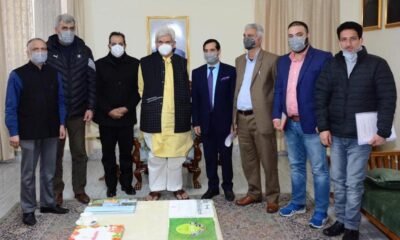

 Industry5 years ago
Industry5 years agoFCIK hails LG Sinha for creating entrepreneur-friendly industrial ecosystem
-



 Economy3 years ago
Economy3 years agoGlobal eCommerce boom and local traders of Kashmir
-

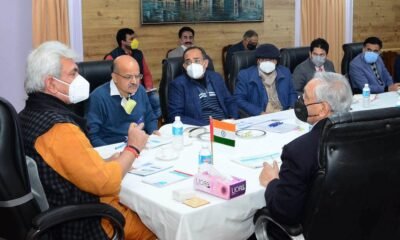

 Energy5 years ago
Energy5 years agoLt Governor discusses J&K power scenario with experts
-



 Infra5 years ago
Infra5 years agoSKUAST-K bags EU project for urban green infrastructure
-



 AgriBiz5 years ago
AgriBiz5 years agoSKUAST-K to set up 3 honey testing labs in Kashmir
-



 Review5 years ago
Review5 years agoScam 1992: Story of the Big Bull of Share Market
-

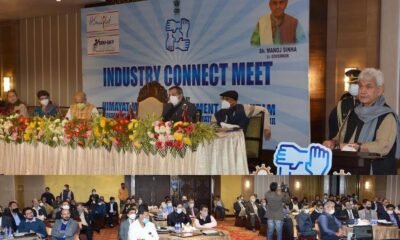

 Jobs5 years ago
Jobs5 years agoJ&K Govt holds Industry Connect Meet-Himayat 2020
-

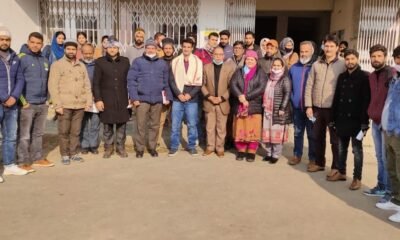

 Careers5 years ago
Careers5 years agoSKUAST-K holds career counselling at Wadura campus

